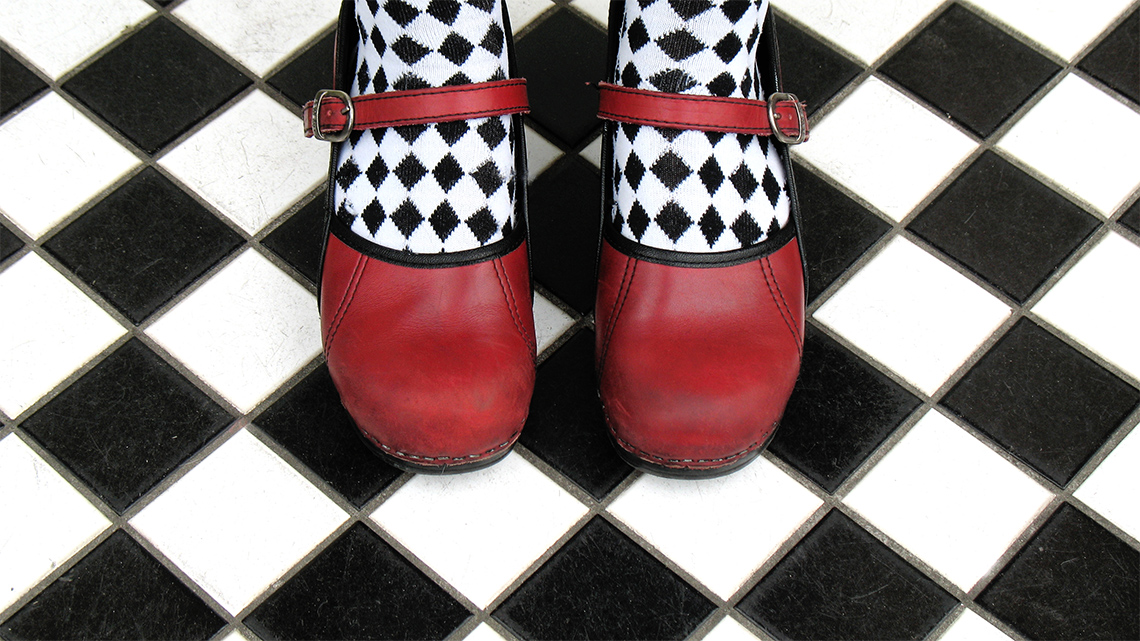Minds On
Explore different patterns
Examine the images and/or descriptions below and identify the patterns.
What kinds of patterns are these?
Can you think of other places patterns can be found in nature and the world?
Record your thoughts using a voice recorder, speech-to-text, or writing tool.
Action
Defining repeating patterns
A pattern is when a group of numbers, objects, or shapes follow a rule.
Sometimes patterns repeat.
Repeating patterns are when the pattern core reoccurs repeatedly.
The pattern core refers to the smallest part of the pattern that keeps on repeating.
Explore the below pattern:

In order to understand how to extend a pattern, you can use a pattern rule.
Pattern rules identify how to extend or repeat the pattern using words to describe it.
An example of a pattern rule for the geometric pattern above would be: circle, square, triangle, diamond.
Task 1: What comes next?
Explore the following examples of repeating patterns.
Select the correct answer.
Task 2: What is the pattern core?
Student Success
Think-Pair-Share
Now that you have explored a few different repeating patterns, consider the following question:
Does it matter if the pattern core was indicated at the beginning of each question?
Record your thinking with a method of your choice and share them with a partner, if possible.
Note to teachers: See your teacher guide for collaboration tools, ideas and suggestions.
Task 3: Create your own repeating pattern
Create your own repeating pattern using pattern blocks, shapes, paper clips, or another material of your choice. Put at least 3 terms in your pattern core. Record your thinking using a method of your choice.
Example:

Task 4: Translating patterns
Now let's create another repeating pattern and translate it. The steps are as followed:
- Create a pattern with shapes.
- Identify the pattern core.
- Create a pattern rule. Example: triangle, hexagon, trapezoid and then repeat.
- Change this pattern into a numerical representation. Each term in this numerical pattern will be the number of sides of the shapes used. Example: 3, 6, 4, 3, 6, 4, 3, 6, 4…
- Recreate the pattern using different shapes or objects of your choice.
Example:

Where possible, share your pattern with someone else.
- identify the pattern core
- create a pattern rule
Consolidation
Task 1: Patterns in real life

Find and choose a repeating pattern in real life.
Record your responses to the following questions using a method of your choice:
- describe the pattern and where you found it
- describe the pattern rule for this pattern
- recreate the pattern numerically
Task 2: Think about your learning
Answer the following questions:
- Why do you think it is important to learn about patterning?
- How does a pattern rule help you in patterning?
- How do you know when a pattern is repeating?
Reflection
As you read through these descriptions, which sentence best describes how you are feeling about your understanding of this learning activity? Press the button that is beside this sentence.
I feel...
Now, record your ideas using a voice recorder, speech-to-text, or writing tool.
Connect with a TVO Mathify tutor
Think of TVO Mathify as your own personalized math coach, here to support your learning at home. Press ‘TVO Mathify’ to connect with an Ontario Certified Teacher math tutor of your choice. You will need a TVO Mathify login to access this resource.
TVO Mathify (Opens in a new window)



